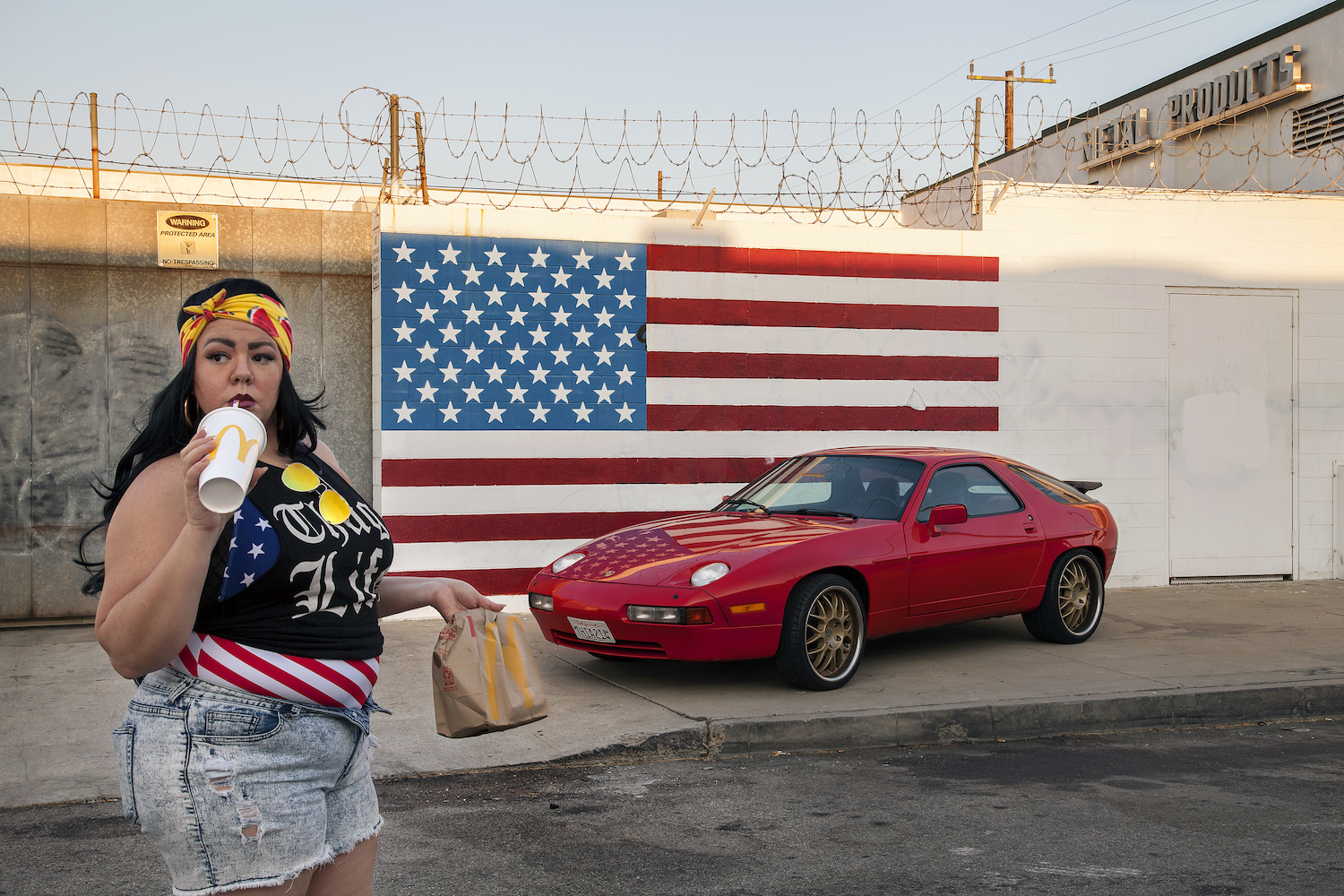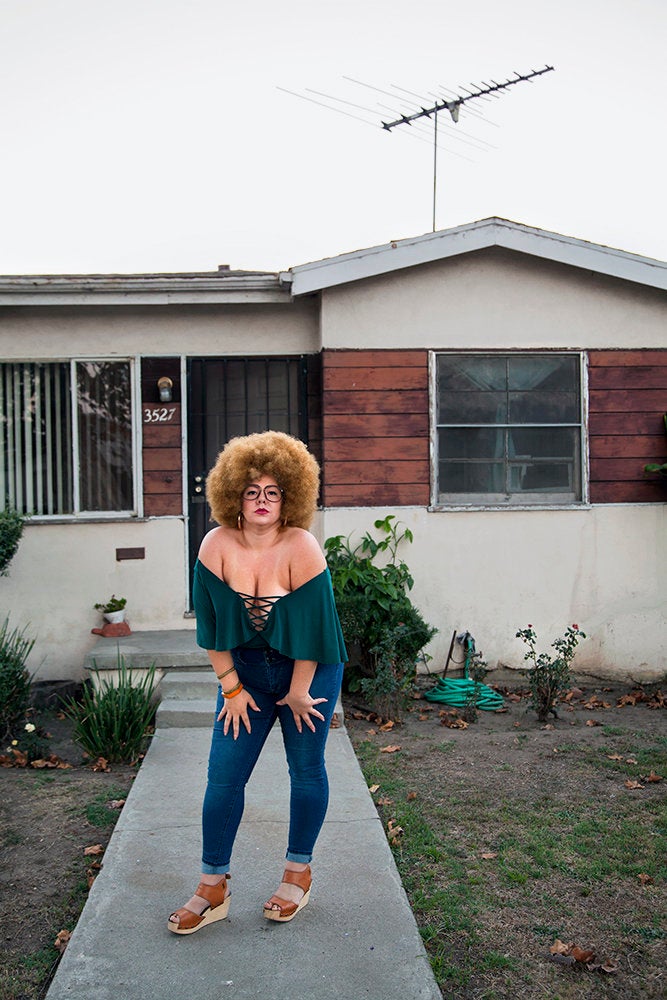An Artist Stands Before Her Fun House Mirror
The New York Times
2016-01-06
Amanda Fortini

Genevieve Gaignard, “A Golden State of Mind” installation, 2015.
Credit: Eric Minh Swenson, via The Cabin LA and Diane Rosenstein |
LOS ANGELES — On a recent Friday afternoon, Genevieve Gaignard, a photographer, collagist and installation artist, was sitting on her bed in the room she rents in the Echo Park neighborhood. For the last year, Ms. Gaignard, who takes self-portraits costumed as various alter egos she imagines, then builds fictional domestic spaces for them, has lived in this nondescript, book-filled and thoroughly carpeted apartment with a professional couple in their late 20s, their chatty lime-green parrot and three cats.
Ms. Gaignard, who is 34, with strawberry-blond hair and long, acrylic nails painted the matte pastel colors of Jordan almonds, had decorated her bedroom with charmingly girlish touches, like a white net canopy befitting a fairy-tale princess and a Felix the Cat clock with a pendulum tail. On every surface were snowdrifts of stuff: piles of clothing, toiletries, plastic sunglasses. On her desk, a bra and a half-eaten granola bar shared space with an assortment of wigs. “This is what happens; this is how involved I get in the artmaking,” she said, waving a manicured hand around at the clutter. “Everything else sort of falls apart.”
A 2014 graduate of Yale’s photography M.F.A. program, Ms. Gaignard does work that reclaims everyday items: hair curlers, curling irons, plastic party favors, costume jewelry, towels. These she finds at thrift shops, dollar and beauty supply stores, or via her mother, who, she says with affection, “is kind of a hoarder.” A forest of Vanillaroma air fresheners dangles from a pair of yellow knee-high boots. A collage made to resemble the faux-wood paneling of a suburban basement is appended with miniature knickknacks. “It’s not like, ‘Hmm, can I make something out of nothing?’” Ms. Gaignard said. “It’s literally like, ‘What do I have access to?’”…
Her recent show, “Us Only,” at Shulamit Nazarian Gallery in the Venice neighborhood, featured a variety of pieces that blurred the lines between highbrow and vernacular, unraveling stereotypes of gender, race and class in the process. Her photos are often likened to those of Cindy Sherman, arguably our most famous costumed self-portraitist. But this comparison takes into account neither the animating impulses of her art — Ms. Gaignard is biracial, and her background forms an essential through line in her work — nor the decades of intervening culture since Ms. Sherman began taking pictures in the late 1970s. Third-wave feminism, online dating, even the ascent of the selfie: All are likely influences on a female artist photographing herself today. (Ms. Gaignard told me that Diane Arbus, not Ms. Sherman, was her seminal artistic inspiration, in part because she feels like “one of the people she photographed.”)…
…Sarah Lewis, a professor of history of art and architecture and African and African-American studies at Harvard, said that Ms. Gaignard’s art explores “the often undiscussed subject of racial indeterminacy.” It is, Professor Lewis notes, a topic well covered by 20th-century writers — Jean Toomer, Nella Larsen, Danzy Senna — but by few contemporary visual artists. Ms. Gaignard’s approach is not narrative, didactic or overtly political; she wittily employs symbols a viewer understands on a visceral level, even as a more explicit meaning remains elusive.
“Her work avoids any easy answers about race or identity,” said Gregory Crewdson, the director of graduate studies in photography at Yale. “I don’t think it’s in any conventional sense a critique. It’s more ambiguous than that. And that’s part of its power.”…
Read the entire article and view the photographs here.



